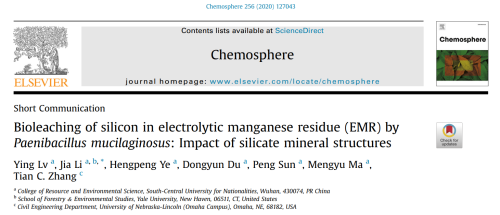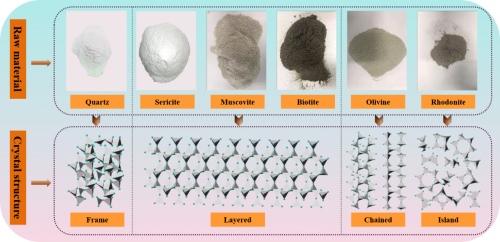Recently, Prof. Du Dongyun’s team published a new research paper, entitled “Bioleaching of Silicon in Electrolytic Manganese Residue (EMR) by Paenibacillus mucilaginosus: Impact of Silicate Mineral Structures” in Chemosphere (IF=5.778). Ying Lv, a master of Grade 19, is the first author of this paper and Jia Li is the corresponding author.
Link to paper: https://www.sciencedirect.com/science/article/abs/pii/S0045653520312364

Electrolytic manganese residue (EMR) is characterized by high silicon content, and thus, is an important silicon source. If the silicon in EMR can be activated by appropriate means so that it can be absorbed by plants, it will not only solve the serious problem of silicon resource shortage in land, but also realize the resource utilization and reduction treatment of solid waste in silicate-containing mining residue. Bioleaching is a promising and novel method to extract or activate elements from ores, with advantages of simplicity, low cost and environmental friendliness compared to traditionally physical and chemical activation processes. While considerable research has been conducted on bioleaching EMR for silicon recovery, sufficient information is not available on the impact of specific silicate mineral structures in EMR on silicon bioleaching.
In the present study, the leaching effect of Paenibacillus mucilaginosus on EMR with high silicon content was studied by shake flask experiments; the mineral composition of EMR was determined, and then the impact of these different silicate minerals (either in EMR or in pure form) on silicon bioleaching were investigated. Results showed that Paenibacillus mucilaginosus had a significant effect on promoting the bioleaching of silicon; silicon in EMR was mainly composed of quartz, sericite, muscovite, biotite, olivine and rhodonite; Paenibacillus mucilaginosus had a significantly different weathering and decomposition effects on different silicate minerals. Among them, sericite, muscovite and biotite with layered structure had the most obvious silicon leaching effect, followed by rhodonite with island structure, while silicon leaching from olivine with chained structure and quartz with frame structure was much more difficult. One can roughly judge the adaptability of bioleaching of silicon in EMR using Paenibacillus mucilaginosus if the main form of silicate minerals in EMR is determined.

Fig. 1 Model of silicon-oxygen tetrahedrons in silicate minerals with different crystal structures